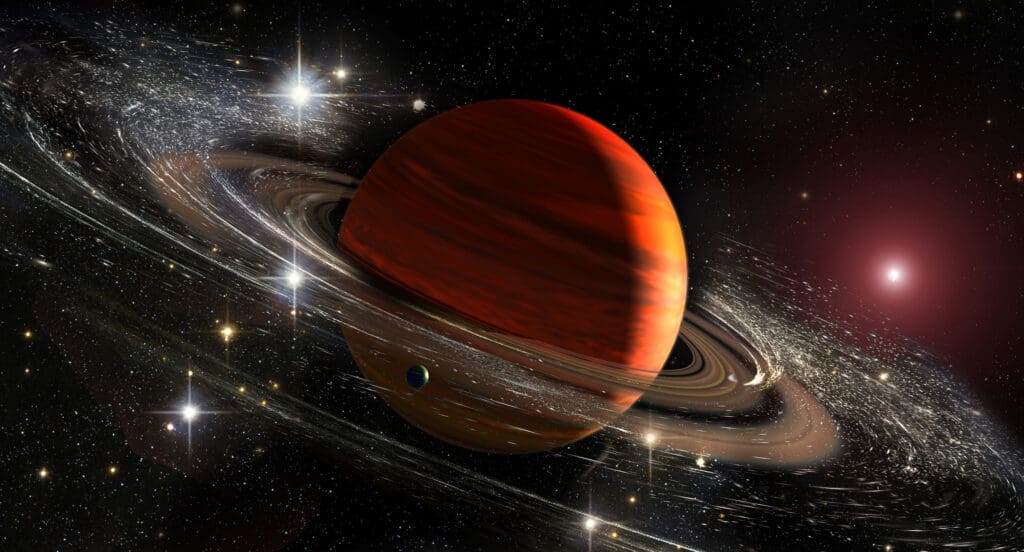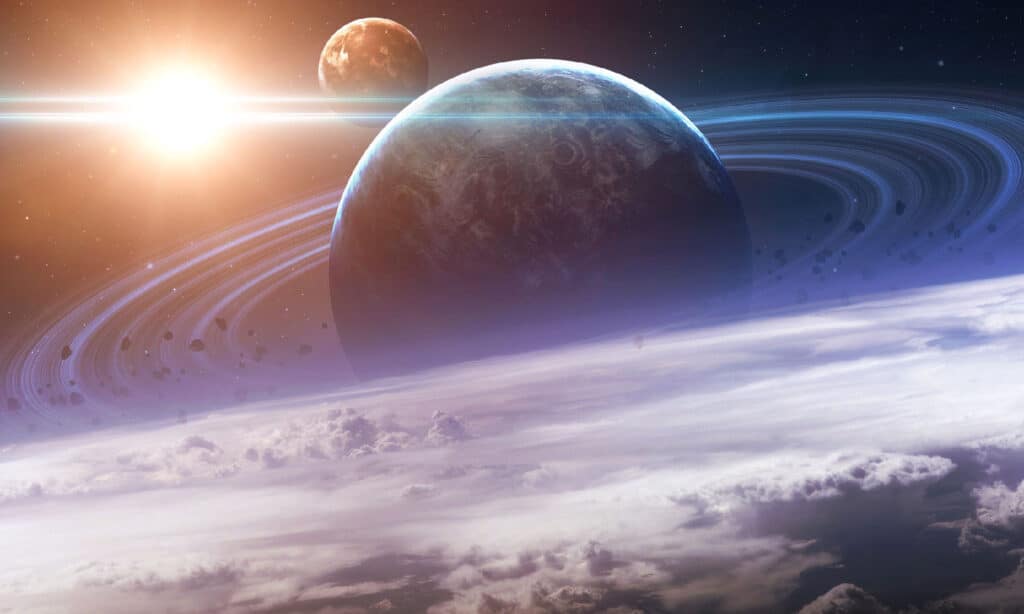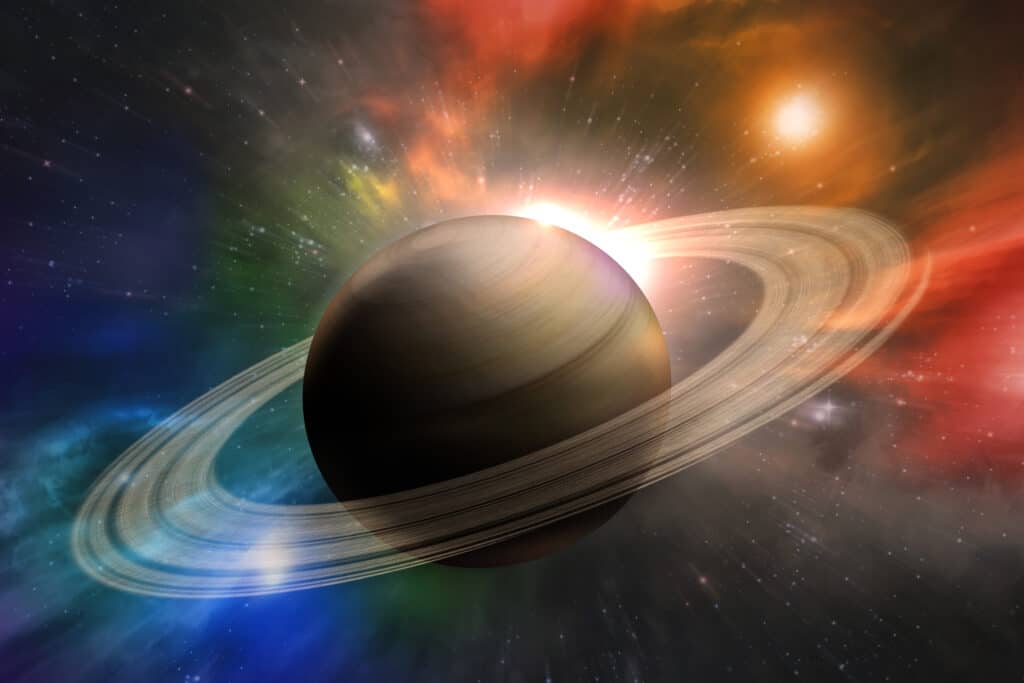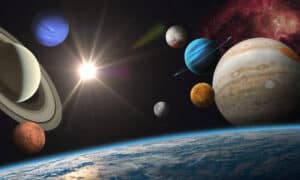The second-largest planet in our Solar System is called Saturn. It is known for its iconic ring system. This system consists of ice particles, dust, and rocky debris surrounding Saturn. Like Neptune and Jupiter, the planet is known as a gas giant. The gaseous yellow outer layer protects a layer of liquid hydrogen, liquid helium, and metallic hydrogen. The planet’s core (which gets extremely hot) is made of rock and iron-nickel.
On Saturn, temperatures vary greatly. As a gas giant, the planet features multiple layers of clouds that consist of various elements. For example, the predominant element in the upper cloud layer is called ammonia ice. In contrast, the lower layers feature water droplets and aqueous ammonia. Each material influences the planet’s temperature.
In the lines below, we’ll take a look at the average highest and lowest temperatures throughout the planet’s surface. Keep on reading if you want to learn more about the topic!
How cold is the surface of Saturn really?

According to NASA, the mean temperature of Saturn is -220 °F.
©iStock.com/Elen11
The average temperature of Saturn’s surface is about -285 °F. Like Jupiter, this planet features layers of clouds that consist of ammonia ice crystals. On the other hand, Saturn’s clouds are much colder than the ones of Jupiter. The planet is so cold that even its famous ring system is made of icy chunks of about three feet. An entire ring, however, can be 10 miles thick.
The planet is a gas giant. It has no defined surface and is believed that it has a rocky core, surrounded by a liquid atmosphere. Like most planets, the core is extremely hot, reaching approximately 21,000 °F in the epicenter.
Besides the ammonia ice clouds, Saturn’s low temperatures are linked to the impressive speed the wind has on this planet. Saturn’s wind can blow at more than 1,000 mph!
According to NASA, the mean temperature of Saturn is -220 °F (for this planet, the mean temperature was recorded at an atmospheric pressure level equal to Earth’s pressure at sea level).
What could survive on Saturn?

Saturn can not support life and has never been able to do so.
©iStock.com/forplayday
Saturn can not support life and, according to research and analysis, has never been able to do so. Its temperatures are too low for any organism to grow and develop there – be it the planet’s chilly surface or scorching hot interior. While we do have, here on Earth, organisms that could survive extremely low temperatures, the extremes of Saturn are just too much. This applies to most planets in our Solar System.
The organisms that can survive low temperatures are known as cryophiles. They are found in polar ice, glaciers, permafrost, deep ocean waters, and snowfields. Obviously, the lowest temperature they are still active at is extremely far from Saturn’s surface average temperature. According to research, cryophiles can grow and develop as they should until the temperature reaches approximately -13 °F (depending on organism type). Beyond this temperature, they adopt a glass-like state which is ideal for preserving their organisms until they are reintroduced into an environment with appropriate living temperatures.
Assuming that organisms could survive on Saturn in a glass-like state, they couldn’t possibly withstand the 1,000 mph winds or the 21,000 °F at the planet’s core. At the same time, Saturn doesn’t have an actual surface – it consists of gas and gaseous clouds.
Could tomato plants or other vegetables/fruits survive on the surface of Saturn?
Tomatoes, other vegetables, and plants couldn’t survive the freezing surface of Saturn. Plants can take a bit of frost and survive temperatures as high as about 90 °F, but nothing beyond that. Some plants can live in freezing temperatures, but not for long.
Given that Saturn’s average surface temperature is -285 °F, it is clear that no plant or living organism could survive there. Of course, the fact that Saturn is one of our Solar System’s gas giants and has no solid surface doesn’t help either. The planet has no soil for cultivation – and if it had, it would probably be rock-frozen as well.
Could tardigrades survive on the surface of Saturn?
Tardigrades are the most resilient microorganisms on Earth. They can survive extreme conditions and temperatures. For instance, they can survive a couple of days at -328 °F. After all, they did endure being exposed to outer space, and most scientists believe they can easily survive the apocalypse. But could they survive the surface of Saturn?
In their active state, tardigrades can survive temperatures above freezing and up to 98 °F, but they aren’t that resilient in this state. In their tun state (dried and lifeless), however, they can survive temperatures as low as -328 °F and as high as 300 °F (but not for long).
Tardigrades could survive on Saturn only in their tun state, given the temperatures on the surface of this planet. Supposedly, they could survive Saturn for some weeks or months. At -4 °F, tardigrades can survive for 30 years, while at -328 °F, for a couple of days. So, in theory, they could resist a bit more than just a couple of days at – 285 °F.
Would water be frozen or liquid on the surface of Saturn?
Water would be rock-solid frozen on the surface of Saturn. At temperatures as low as -285 °F, water molecules are so dense that water turns into a material as tough as rock. Keep in mind that water freezes at 32 °F. Once temperatures drop below that, you can’t say that the water is more frozen.
On the other hand, in the distant future, we might see liquid water at temperatures well below its normal freezing point. Scientists are currently trying to keep water liquid at extremely low temperatures, being able to do so at -49 °F.
Are there any signs of life on Saturn?

Saturn features base materials, pressures, and temperatures that are incompatible with life.
©iStock.com/EzumeImages
There aren’t and haven’t ever been any signs of life on Saturn. The planet features base materials, pressures, and temperatures that are incompatible with life as we know it. No organism could possibly live and develop there, as mentioned above.
The only body in the proximity of Saturn that might show signs of life is one of the planet’s moons, Enceladus.
The main characteristics of Saturn
| Volume | Mass | Surface gravity | Average surface temperature | Predominant composition element | |
|---|---|---|---|---|---|
| Saturn | 763.59 Earths | 95.159 Earths | 1.065 g | -285 °F | Hydrogen (96.3%) |
| Earth | 2.59876×1011 cu mi | 1.31668×1025 lb | 1 g / 32.1740 ft/s2 | 57 °F | Nitrogen (78.08%) |
How long is a one-way trip to Saturn?
A one-way trip to Saturn is about three years and two months long. This is the shortest route taken by most spacecraft that have visited this planet. Cassini is the spacecraft with the longest route. It took this spacecraft approximately six years and nine months to reach Saturn.
The first spacecraft sent towards Saturn was Pioneer 11 – it reached the planet in 1979. The most recent is the above-mentioned Cassini.
7 interesting facts about Saturn
Now that we’ve got temperature out of the way, here are seven of the most interesting facts about Saturn:
- Saturn has no actual surface. Its atmosphere consists mainly of gasses, of which hydrogen is the most predominant.
- The rings of Saturn are not solid, even if they might look so. Instead, they consist of rocks, dust, and ice particles that surround the planet.
- Saturn spins quite fast on its axis. As a result, a day there lasts only about 10 hours. On the other hand, it spins rather slowly around the Sun. One Saturn year lasts about 30 Earth years!
- Saturn is less dense than water. Its density is 42.8 lb/ft³ (687 kg/m³). Given a large enough pool, the planet would float on water. On the other hand, it has a volume equal to over 760 Earths!
- Just like Saturn, Uranus and Neptune also have a ring system. Saturn’s ring system, however, is the only one that we can easily see from our planet.
- Saturn has a total of 82 moons. One of these, Titan, is the second-largest moon in our Solar System.
- One of Saturn’s moons, Enceladus, could host life. Ice geysers have been recently discovered around the moon’s south pole. This shows that Enceladus, unlike Saturn, is warm enough to keep water in liquid form.
Up Next:
- This Is How Much You’d Weigh On Saturn
- This is How Hot And Cold The Surface of Mercury Really is, And What Could Survive There
- Discover the Largest Star in the Known Universe
The photo featured at the top of this post is © iStock.com/EzumeImages
Thank you for reading! Have some feedback for us? Contact the AZ Animals editorial team.






